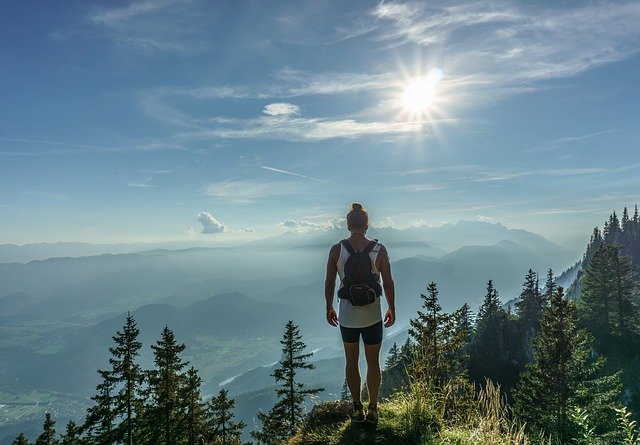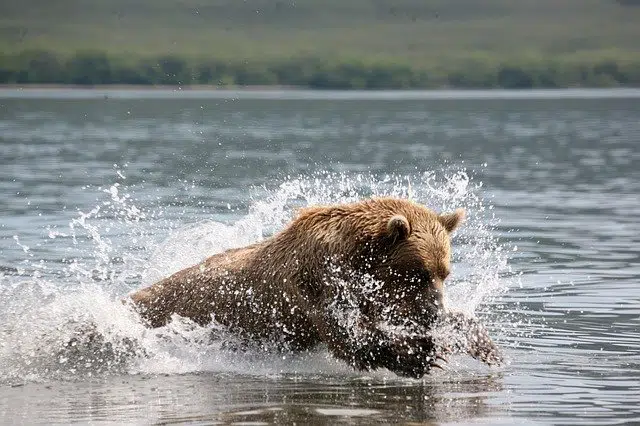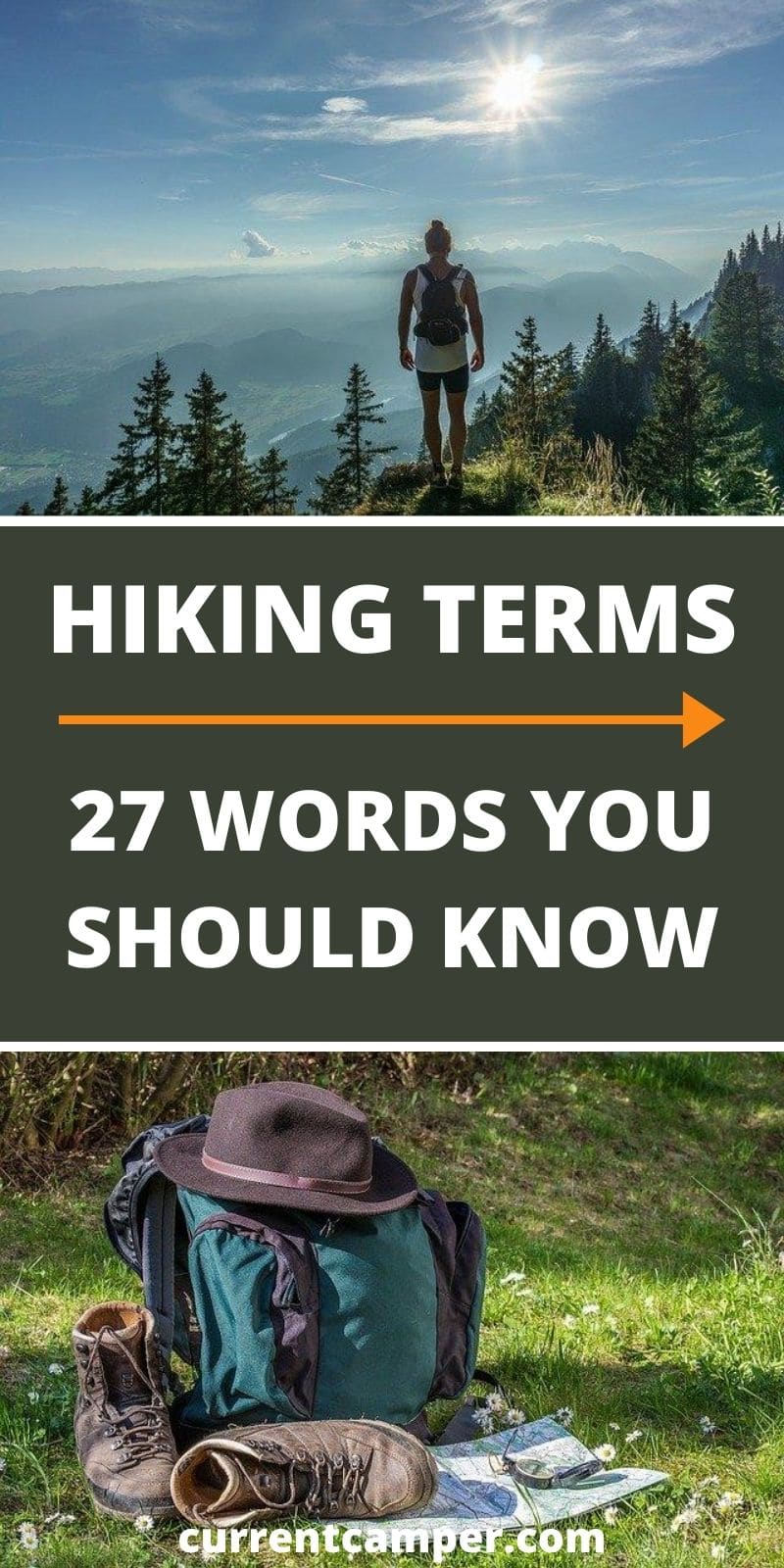
Hikers, especially those that enjoy long-distance hikes, have their own crazy terms and confusing vocabulary, which can intimidate beginners.
Here’s a glossary of commonly used hiking terms you may see in trail descriptions and hear out on the trail.
Alpine Start
An alpine start means a very early morning start in the mountains. Often well before sunrise in order to avoid mid-day sun or afternoon lightning storms.
Altitude Sickness
Altitude sickness is a result of lower oxygen levels and often happens when people unaccustomed to higher altitudes go from lower altitudes to over 8,000 feet quickly.
READ MORE: How To Train For A Hike
Mild altitude sickness is common and symptoms can include headaches, nausea, vomiting, dizziness and trouble sleeping. At extreme altitudes, altitude sickness can be life-threatening.
Bear Canister

A bear canister is a bear-resistant storage container designed to store food, toiletries, and other scented items that can attract bears. They are highly recommended and often required when backpacking or camping in bear country.
Beta
Beta is a climbing term that means information or tips about a certain climbing route. Hikers have adapted the word to mean insider information about a trail from someone who has already done the route. This could be information about an easy to miss turn or other helpful tips.
Bivouac
A bivouac is an improvised shelter not involving a tent or other covering. Bivouacking is only typically done in emergencies. Some hikers may carry a bivouac sack if there is a chance they might be caught out of doors overnight.
Blaze
A blaze is a mark on a tree, rock, sign or another object that marks a trail. Blazes are typically a strip of paint in different configurations and the color may give you extra information about the trail. Like for example, a blue blaze, normally leads to water.
Bonus Miles
Bonus miles are the extra miles you hike when making a wrong turn or traveling off the trail.
Bushwhack
(PIXABAY)
Bushwhacking is a blanket term for any off-trail hiking. However, even though the dictionary definition for the word is “ to cut or push one’s way in a specified direction through dense vegetation,” it is still frowned upon to chop down bushes while hiking.
This is typically done when trying to get to a seldom traveled peak or when you’re lost in the wilderness.
Cache
A cache is any food, water or other gear stashed for later retrieval while hiking. This can be anything from hiding a jacket for the return trip down the mountain to stashing gallons of water for a long-distance desert trek.
Cairns
Cairns are those little stacks of rocks you find alongside the trail. Used the correctly, they help hikers navigate difficult to follow paths, like desert trails and high alpine routes.
Cat Hole
It’s a hole that is dug into the ground and is at least six inches deep and is located at least 200 feet away from any water source, for the purpose of disposing of human waste or kitchen wastewater.
Cirque
A cirque is an amphitheater-shaped basin formed by glacial erosion.
Class Hiking Terms
When reading hiking descriptions, you may see references to the class of the trail. Class is a hiking term used to describe the difficulty of walks, hikes and climbs. The most common rating system in the United States is the Yosemite Decimal System.
- Class 1 hiking means easy walking on gentle terrain.
- Class 2 hiking involves a little scrambling and the occasional use of your hands for stability.
- Class 3 hiking involves both the hands and feet, but there is no real risk of falling.
- Class 4 hiking is essentially class 3, but with exposure, technical climbing equipment is not necessarily needed, but a fall could leave you injured.
- Class 5.0 hiking or higher involves true climbing and the need for protective gear.
Day Hiker
Opposed to a backpacker or thru-hiker, a day hiker is someone out for the day that typically carries a small backpack or no pack at all.
False Summit
A false summit is a high point that appears to be the summit of the mountain, but upon reaching it, you realize it’s not. Sometimes a mountain can have several false summits and they can take a serious psychological toll on hikers — especially on long hikes.
16. GORP
(PIXABAY)
GORP stands for “Good Old Raisins and Peanuts,” but is now synonymous with any type of trail mix.
Leave No Trace
Leave No Trace is a set of ethics promoting preparedness and conservation in the outdoors. They’re the golden rules of outdoor recreation and include the following seven principles: plan ahead and prepare, travel and camp on durable surfaces, dispose of waste properly, leave what you find, minimize campfire impacts, respect wildlife and be considerate of other visitors.
Peak Bagging
Peak bagging is ticking off a checklist of summits. This may mean going after a well-known list such as all of the Colorado 14ers or making your own personal list.
Post Hole
Post holing is hiking in deep wet snow without snowshoes, where you’re sinking to mid-calf or deeper and creating a trail of small holes behind you.
SAR
This hiking term is short for Search and Rescue, a SAR team is what gets dispatched during outdoor emergencies.
Scree
Scree is a mass of loose rock covering a mountain slope. They’re normally difficult to walk on and are often found at the base of mountains and volcanoes.
Switchback
This hiking term refers to a trail that zig-zags up a mountain and are built to protect a hill from erosion. They’re also used to lengthen the climb to a more moderate incline rather than having hikers blaze up a steep slope.
Ten Essentials

The Ten Essentials are a list of survival items hiking organizations recommend everyone carry for safe travel in the backcountry.
This list includes proper navigation tools, headlamp, sun protection, first aid kit, knife, matches, extra food, extra water and extra layers of clothing.
Thru-Hiker
In contrast to a day hiker, a thru-hiker is out there for the long haul. It’s someone who is hiking a continuous trail such as the Appalachian Trail, Colorado Trail or the Continental Trail all in one go.
Topo

Short for a topographical map, a topo is a kind of map that shows the elevations and geographical features of an area. Topos are great for understanding the topography of a particular route and navigating when exploring off-trail.
Trail Magic
A term coined by long-distance hikers, trail magic refers to unexpected kindness and serendipitous happenings on the trail. This could mean a free ride into town, a gift of food from a stranger, or a magical moment shared between hikers passing each other on the trail.
Wag Bag
A wag bag is a waste collection kit designed to carry human waste in areas where cat holes are not allowed. It’s essentially a human poop bag and often contains a spill-proof disposal bag, toilet paper and hand sanitizer.
What hiking terms do you use while on the trail?
Pin it!


